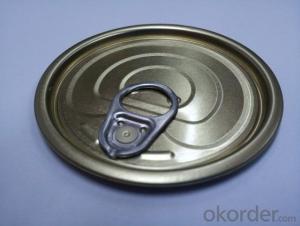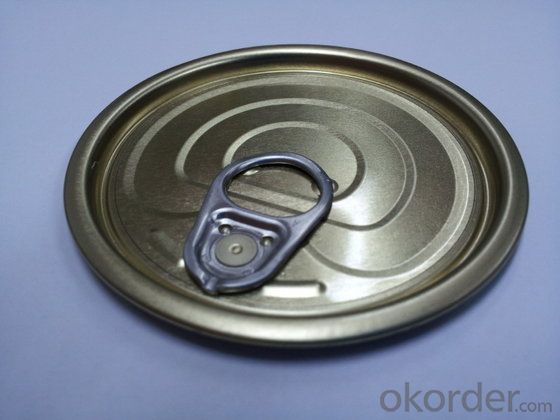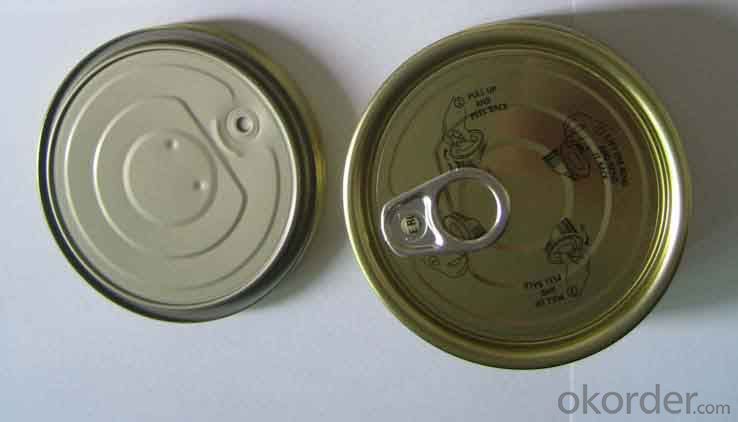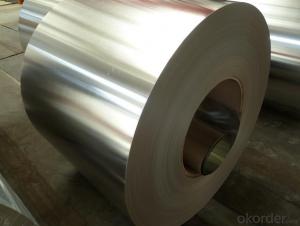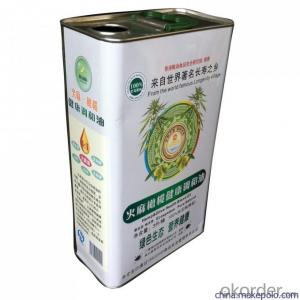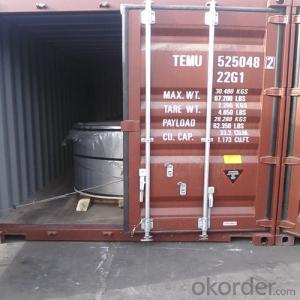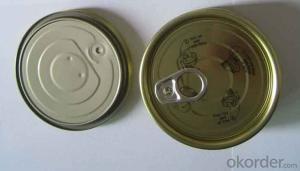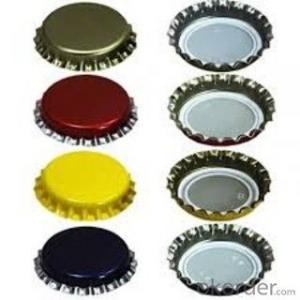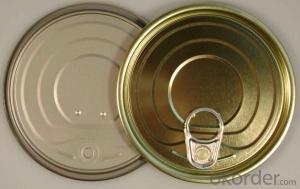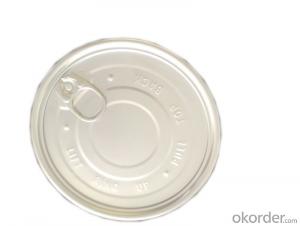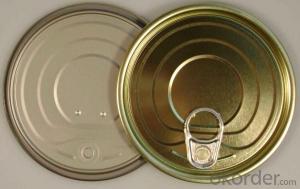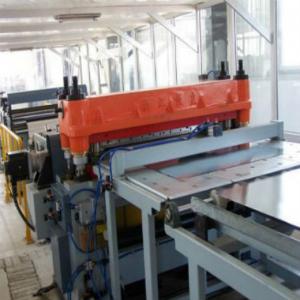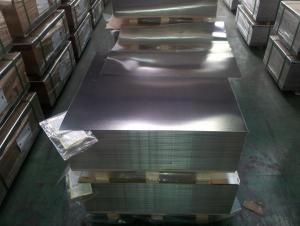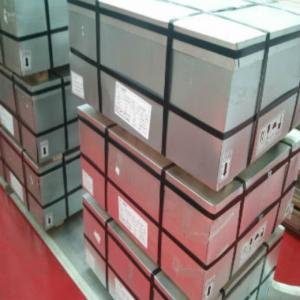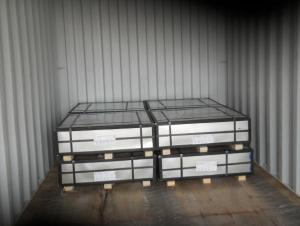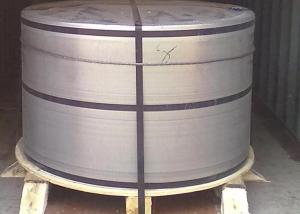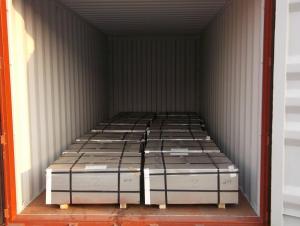High Quality Easy Open End,Tinplate Material, 52mm 202#
- Loading Port:
- China main port
- Payment Terms:
- TT OR LC
- Min Order Qty:
- 3040000 pc
- Supply Capability:
- 100000000 pc/month
OKorder Service Pledge
OKorder Financial Service
You Might Also Like
Quick Details
Metal Type: Tinplate
Feature: Aseptic, Full open
Printing Handling: UV Coating, Varnishing
Custom Order: Accept
Model Number: 202# 52.5mm
Name: Easy open end line
Inner coating: Organosol
Shape: Round
Packing: Paper tube+pallet
Specifications
1.Easy open end line
2.Coating:Epoxy phenolic
3.Material:tinplate
4.Dia:52mm
5.Factory,Can offer OEM service
Name | easy open end line |
Item No. | 202# |
Shape/type | Round |
Size(mm) | Dia 52 |
Coating | Epoxy phenolic |
Material | Tinplate |
Pcs/20 GP’ | 3,040,000 Customize packing: as clients’ requests. |
Features | 1.Used for packaging of tomato paste,jam,salad…etc. 2.Coating can be according to the customer required.
|
Our packing
We could offer package as customers require, by carton or by wooden pallet.
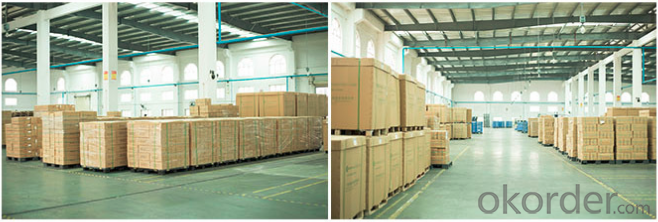
Our Workshop
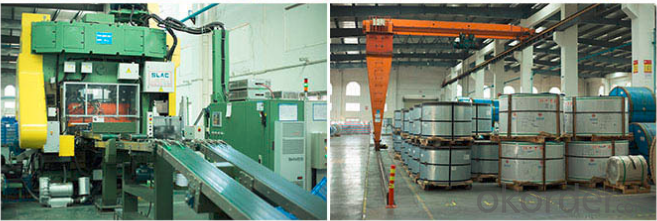
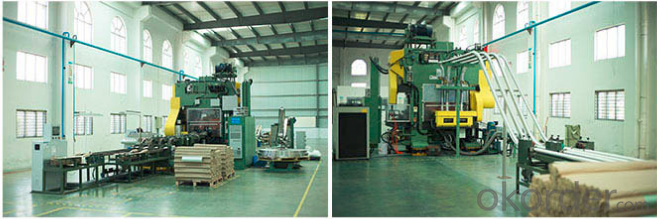
FAQ
1.Q: What is the material of EOE?
We can offer both tinplate and aluminum material made EOE;
2.Q:Could you offer samples for our testing?
YES, we could offer sampler for free if needed;
3. Q:Can you make new mold with customized size I need?
YES, We can make mold for you if reach some qty.
- Q: What are the typical manufacturing processes for tinplate products?
- The typical manufacturing processes for tinplate products include coil cutting, cleaning, annealing, coating, baking, and shaping.
- Q: Can tinplate packaging be used for promotional items?
- Yes, tinplate packaging can be used for promotional items. Tinplate packaging offers a durable and visually appealing option, making it suitable for promotional purposes. It can be customized with branding and designs, making it an effective tool to enhance brand visibility and create a lasting impression among recipients.
- Q: How is tinplate recycled and what are its recycling rates?
- Tinplate, which is commonly used for food and beverage packaging, is recycled through a process called steel recycling. The recycling of tinplate involves collecting and separating it from other waste materials, followed by shredding, melting, and refining to produce new steel products. Tinplate has a high recycling rate, with approximately 80-90% of tinplate packaging being recycled globally. This high recycling rate is due to the fact that tinplate is a valuable material that can be easily and efficiently recycled, reducing the need for raw materials and minimizing environmental impact.
- Q: How does the tin coating affect the appearance of tinplate?
- The tin coating enhances the appearance of tinplate by giving it a shiny and reflective surface. It adds a lustrous touch to the metal, making it more visually appealing and attractive.
- Q: What are the industry standards for tinplate?
- The industry standards for tinplate typically include specifications regarding the tin coating thickness, base metal quality, surface finish, dimensional tolerances, and other relevant characteristics. These standards are established by organizations such as the International Organization for Standardization (ISO) and the American Society for Testing and Materials (ASTM), ensuring consistency and quality across the tinplate industry.
- Q: How does tinplate contribute to the convenience of pet care products?
- Tinplate contributes to the convenience of pet care products by providing a durable and lightweight packaging option that helps preserve the quality and freshness of the products. It is also easily recyclable, ensuring sustainability while offering a convenient solution for pet owners.
- Q: How is tinplate tested for quality control?
- Tinplate is tested for quality control through various methods such as visual inspection, chemical analysis, and mechanical testing. Visual inspection involves checking for any defects or imperfections on the surface of the tinplate, ensuring it meets the required standards. Chemical analysis is performed to determine the composition of the tinplate, ensuring it contains the appropriate levels of tin and other alloying elements. Mechanical testing involves subjecting the tinplate to various stress tests to assess its strength, ductility, and resistance to corrosion. These quality control measures help ensure that tinplate meets the necessary standards for its intended use.
- Q: Can tinplate be used for ammunition?
- Yes, tinplate can be used for ammunition. Tinplate is a type of steel plated with a thin layer of tin, which provides corrosion resistance and durability. It is commonly used for manufacturing metal cans, including ammunition containers.
- Q: Can tinplate be used for high-temperature applications?
- No, tinplate is not suitable for high-temperature applications as it has a low melting point.
- Q: Can tinplate be used for consumer electronics packaging?
- Yes, tinplate can be used for consumer electronics packaging. Tinplate is a durable and corrosion-resistant material that provides excellent protection for electronic devices. It is commonly used for packaging consumer electronics such as smartphones, tablets, and small appliances.
Send your message to us
High Quality Easy Open End,Tinplate Material, 52mm 202#
- Loading Port:
- China main port
- Payment Terms:
- TT OR LC
- Min Order Qty:
- 3040000 pc
- Supply Capability:
- 100000000 pc/month
OKorder Service Pledge
OKorder Financial Service
Similar products
Hot products
Hot Searches
Related keywords
